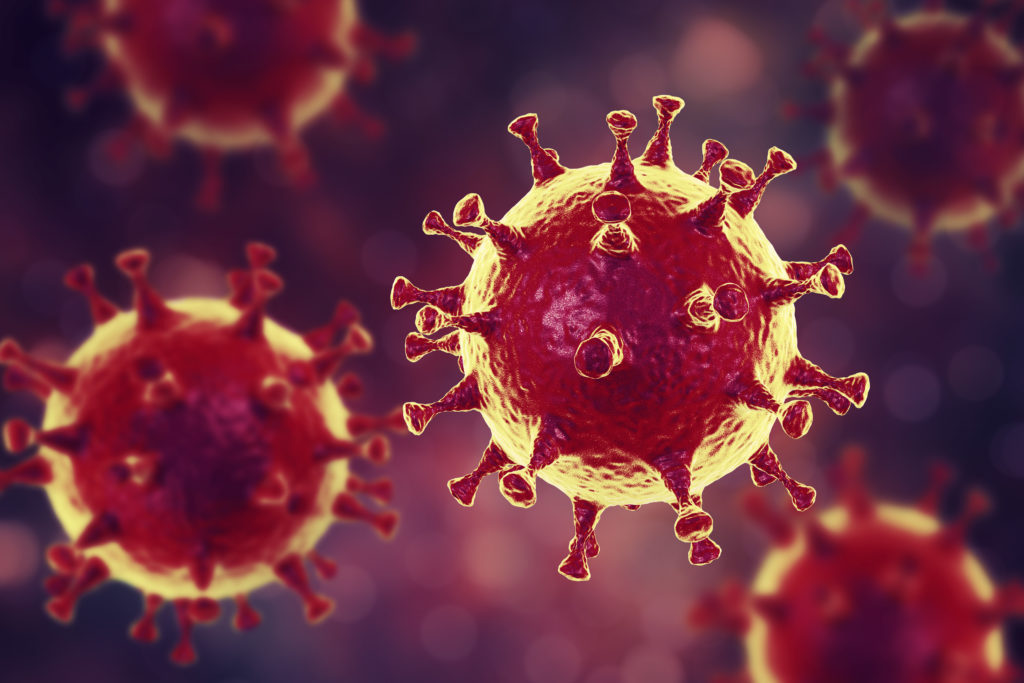
Blog Updated on June 16, 2020
One of the biggest outstanding questions of the COVID-19 pandemic is why symptoms vary so much among patients. Some patients have no symptoms at all; some symptoms are mild, while others are extremely severe. Among the more severe cases, a common pattern of disease progression happens like this: A patient gets through the first week with some signs of recovery—then suddenly they rapidly deteriorate. In some cases, they go from needing just a tiny bit of oxygen to requiring a ventilator within 24 hours.
This pattern, often seen in young and otherwise healthy patients, has baffled doctors. What causes these patients to suddenly crash? Research now suggests that the patient’s own immune system may be to blame. It’s called cytokine release syndrome—also known as the “cytokine storm”.
The Cytokine Storm
Think of a viral infection as a house being on fire. When smoke is detected, the smoke alarm will go off, which summons fire-fighting personnel and surrounding resources to control the fire. Once the fire is put out, the smoke alarms stops. But what if the fire is out but the alarm keeps sounding? The faulty signal will continue to call firefighters to the scene, blasting chemicals and water to the house, causing unnecessary damage. This is similar to what happens in a cytokine storm. When our immune system is under attack, cytokines (e.g., IL-2, IL-6, IL-10, TNF-α) are released to sound the alarm, recruiting immune cells to fight off the virus. This is a necessary response to defend ourselves from the viral infection. But in some cases, the surge of cytokines cannot be turned off, causing immune cells to invade and damage our own cells, causing more harm than the virus itself. The cytokine storm often triggers acute respiratory distress syndrome (ARDS), a type of respiratory failure in which fluid leaks into the lungs, essentially drowning the patient. Sadly, roughly 40% of ARDS patients do not survive.
Does your research involve detecting cytokines? Learn about the new Lumit™ assays for detecting cytokines in cell culture samples.
Cytokine storms are nothing new. They have been known to arise from a variety of infectious and non-infectious illnesses, including SARS, MERS, influenza, bacterial infections, multiple sclerosis, pancreatitis and primary hemophagocytic lymphohistiocytosis (HLH). The main indicators of cytokine storms are elevated cytokine levels and increased neutrophil-to-lymphocyte ratio (NLR) in the blood. Recent studies reveal that these cytokine storm indicators are present in a subgroup of patients with the most severe cases of COVID-19, but not in mild cases. This suggests that the cytokine storm may be the reason some COVID-19 cases are worse than others.
Treating the Cytokine Storm
The good news is, there are already a variety of established drugs known to effectively suppress cytokine storms. Many are routinely used to treat autoimmune diseases such as rheumatoid arthritis, in which the patient’s own immune cells attack tissue at the joints, causing swelling and pain. Some of these immunosuppression drugs are broad anti-inflammatory drugs (e.g., corticosteroids) that reduce overall immune activity, while others are cytokine inhibitors that block specific cytokines. In fact, the RECOVERY study from the UK released information that controlled use of the corticoid steroid dexamethasone, does appear to have a positive effect on severe cases of COVID-19.
However, doctors warn that immunosuppression is not for everyone. Suppressing the immune system while fighting viral infection can lead to serious side effects and increase the risk of secondary infection. Some doctors are now urging for all severe COVID-19 patients to be screened for cytokine storm indicators. This will help identify which patients could benefit from immunosuppression drugs, and significantly improve their chances of survival. An IL-6 inhibitor (tocilizumab) has already been approved in China to treat patients with COVID-19 pneumonia and high IL-6 levels, and a number of other clinical trials are also underway.
Treating the cytokine storm may be the immediate answer to help reduce mortality for some COVID-19 patients. More research on immunosuppression therapies, as well as antiviral treatments and vaccines, will be essential for the long-term control of this disease.
References
Qin, C. et al. (2020) Dysregulation of Immune Response in Patients with COVID-19 in Wuhan, China. Clin Infect Dis. [Epub ahead of print]
Mehta, P. et al. (2020) COVID-19: consider cytokine storm syndromes and immunosuppression. Lancet. 395(10229):1033–1034
Why Some COVID-19 Patients Crash: The Body’s Immune System Might Be To Blame
Related Posts
Latest posts by Johanna Lee (see all)
- Microfluidic Organoids Could Revolutionize Breast Cancer Treatment - March 25, 2025
- Bacteria From Insect Guts Could Help Degrade Plastic - January 28, 2025
- A Diabetes Drug, Metformin, Slows Aging in Male Monkeys - December 19, 2024
